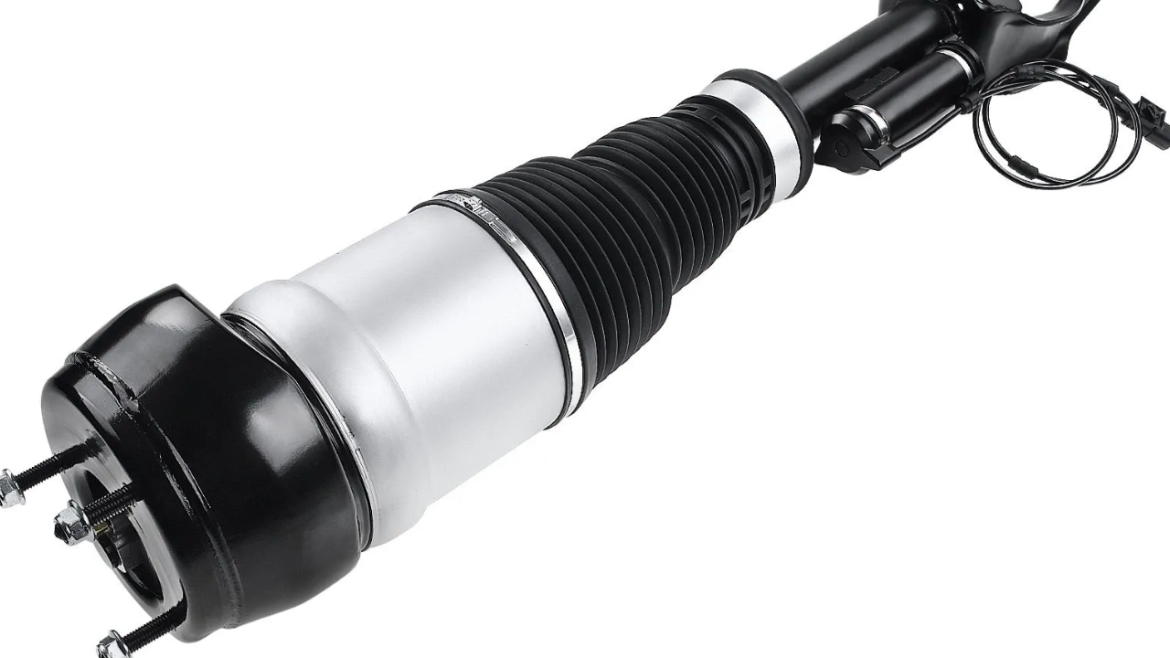There are numerous different parts required for a system with air suspension to instantly adjust your ride height. The air strut is one of the most important parts of any system with air suspension. To enable on-the-fly air ride height modification, an air strut will immediately replace your existing hydraulic strut.
With the aid of the air compressor and airlines, air struts function by inflating and deflating the airbag. To achieve the ideal ride height, you can easily modify the air pressure being fed to the air struts with almost all air management systems. When you wish to raise the vehicle, the compressor inflates the bag. When you want to lower the vehicle, the compressor deflates the bag electronically.
One of the simplest ways to rapidly acquire the desired height adjustment is to use air struts, which are often present on all four corners of completely bagged vehicles. For fine-tuning your air suspension after installation, the majority of air struts come with built-in caster/camber adjusters. When installed properly, A-Premium air strut operate very simply and are a terrific addition to any car needing changeable height adjustment.
Types of Air Strut Systems
The following are the air suspension types strut systems:
- The Double Convoluted
- The Tapered Sleeve
- The Rolling sleeves
Convoluted Air Twice
The Convoluted Air Twice pattern has the appearance of two little tires placed atop each other. Air springs like these are ideally suited for use on a majority of front suspensions including a spring that is well inboard of the suspension’s load point since they typically have a shorter stroke, a greater spring rate, and a larger load capacity. As a result, the need for load capacity is multiplied while the need for travel is divided.
Tapered and Rolling Air Strut
Smaller in diameter with a greater spring rate and a longer stroke are tapered- and rolling-sleeve air springs. They are ideal for the majority of rear-end applications since they have fewer load-capacity constraints and more travel requirements.
The air spring suspensions need devices for regulating air pressure and air compressors to compress air. The air compressors applied to these systems are typically modest, electric, or engine-powered units that periodically top off a spare air tank mounted on board to save future quick usage of compressed air. However, the suspension mechanism is more intricate. Modern automobiles include both an air spring and an electrically modulated air suspension.
Benefits and drawbacks of airborne suspension techniques
Benefit
A suspension system with air has the following benefits in various fields:
- Air struts lessen road noise, vibration, and harshness, which enhances driving comfort and decreases driver fatigue.
- Less while operating a large vehicle, vibration indicates a suspension mechanism will last longer.
- Air suspension lessens the vehicle’s bounce when a small wheelbase truck is unloaded over rough terrain.
- Higher cornering speeds are possible due to the air suspension’s improved traction on the road.
- Air suspensions offer immediate adjustability due to their large actuator assortment loads and rates capabilities. The adjustability can quickly get the desired ride height and ride load.
- Adapting to various circumstances and altering the rates in the spring in conjunction with customized performance increases your car’s endless performance potential, Real-time tweaking is possible, and a plush ride for increased comfort on an erratic route.
- Towing: Using this method, trucks, and other large vehicles may tow bigger loads more readily. Drivers can stiffen up more when pulling heavy loads to enhance riding comfort.
Drawbacks
A suspension system with air has significant drawbacks in spite of its positive aspects. The drawbacks of utilizing springs for air suspension are listed below.
- A common problem with airborne suspension techniques universally is leaking. The system will become flat once it can no anymore hold air. Airlines that are overbooked frequently experience air suspension concerns.
- Initial expenses: It’s a one-off deal. Cost connected with getting a car. Only premium, high-end, and a few SUV models come with air suspension as standard machinery.
- Compared to standard dampers and springs maintenance will cost more.
- The installation of using an air suspension requires more time due to the complexity of the wiring, connectors, and hose setups. A variety of many tools must be used for the installation itself. Therefore, hiring a qualified the best mechanic to manage it is an approach to guaranteeing vehicle integrity and safety.
- Over the course of 10 years, an unmaintained system Using air suspension end up costing three times more than repair as a system of leaf suspension and fuel efficiency
- May suffer as a result of the system with air suspension higher weight compared to leaves suspended.
- Corrosion or surface moisture interior may be to blame for the airbags or struts failing.
- There is a problem with their bags or struts for the air system connected an air system by air suspension tubing.
Sum Up
Air struts give cars a flexible and comfortable suspension system by combining an air spring and a shock absorber. They offer benefits like a smoother ride, the ability to level loads, and ride height customization for various driving situations. The kind of air strut chosen depends on the application for which the vehicle is designed, the necessary load, and the desired performance characteristics.
